2021 Los Alamos Dynamics Summer School
Contact
- Institute Director
- Charles Farrar
- (505) 665-0860
- Program Administrator
- Ellie Vigil
- (505) 667-2818
- Institute Administrator
- Yvonne John
Team Projects
Project Description
Mentors: Scott Ouellette, Thomas Roberts
Students: Sebastian Chirinos, Aneesh Pawar, Haley Tholen
Project Team
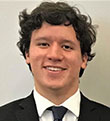 Sebastian Chirinos – I am a rising senior pursuing a Mechanical Engineering degree and an Engineering Entrepreneurship certificate from Texas A&M University. Here at Texas A&M I am a member of the Engineering Mentorship Council, an engineering mentorship organization for freshmen, and part of the Aggie Research Scholars (ARS) Program, a team-based research program. Currently, as part of ARS, my research involves the exploration of utilizing pre-computed substructures as building blocks to achieve the design of multi-objective assembly level finite element analysis. This research has furthered my interest in computational solid mechanics which I hope to further explore in graduate school. Outside of school I enjoy playing board games and outdoor activities that I can enjoy with friends.
Sebastian Chirinos – I am a rising senior pursuing a Mechanical Engineering degree and an Engineering Entrepreneurship certificate from Texas A&M University. Here at Texas A&M I am a member of the Engineering Mentorship Council, an engineering mentorship organization for freshmen, and part of the Aggie Research Scholars (ARS) Program, a team-based research program. Currently, as part of ARS, my research involves the exploration of utilizing pre-computed substructures as building blocks to achieve the design of multi-objective assembly level finite element analysis. This research has furthered my interest in computational solid mechanics which I hope to further explore in graduate school. Outside of school I enjoy playing board games and outdoor activities that I can enjoy with friends.
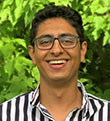 Aneesh Pawar – My name is Aneesh Pawar. I am from Los Alamos, NM. I have a BS in Mechanical Engineering with a minor in Robotics and Intelligent Systems from the Colorado School of Mines. I will be attending Carnegie Mellon University to pursue a MS in Mechanical Engineering with a research focus on Robotics and Controls. I love to travel, eat and cook new foods, play ultimate frisbee and soccer, and enjoy the outdoors.
Aneesh Pawar – My name is Aneesh Pawar. I am from Los Alamos, NM. I have a BS in Mechanical Engineering with a minor in Robotics and Intelligent Systems from the Colorado School of Mines. I will be attending Carnegie Mellon University to pursue a MS in Mechanical Engineering with a research focus on Robotics and Controls. I love to travel, eat and cook new foods, play ultimate frisbee and soccer, and enjoy the outdoors.
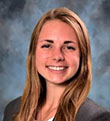 Haley Tholen – Haley Tholen graduated in Spring 2021 from the University of Illinois at Urbana-Champaign with a Bachelor's degree in Engineering Mechanics and a minor in Sustainability, Energy, and Environment. She currently holds leadership positions in the Society of Women Engineers and Women in Mechanical Science and Engineering. She will begin a Ph.D. program in Mechanical Engineering in the fall, where she will continue working towards her academic and research goals. Originally from Minnesota, Haley enjoys life on the lake, no matter the weather! Haley also loves traveling, hiking, scrapbooking, and scuba diving (when given the chance!).
Haley Tholen – Haley Tholen graduated in Spring 2021 from the University of Illinois at Urbana-Champaign with a Bachelor's degree in Engineering Mechanics and a minor in Sustainability, Energy, and Environment. She currently holds leadership positions in the Society of Women Engineers and Women in Mechanical Science and Engineering. She will begin a Ph.D. program in Mechanical Engineering in the fall, where she will continue working towards her academic and research goals. Originally from Minnesota, Haley enjoys life on the lake, no matter the weather! Haley also loves traveling, hiking, scrapbooking, and scuba diving (when given the chance!).
Project Description
Mentors: Chuck Farrar, Garrison Flynn
Students: Samuel Hinerman, Makalya Ley, Peter Newman
Project Team
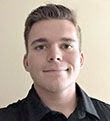 Samuel Hinerman – Currently I am a Junior at the University of California Riverside studying Mechanical engineering, I am a part of the school’s aerospace systems club, and I work part time at an aluminum forge in Rialto as the facilities and maintenance engineering intern. In my limited free time I like to go on runs around the campus/surrounding neighborhood of UCR, and play disc golf with friends.
Samuel Hinerman – Currently I am a Junior at the University of California Riverside studying Mechanical engineering, I am a part of the school’s aerospace systems club, and I work part time at an aluminum forge in Rialto as the facilities and maintenance engineering intern. In my limited free time I like to go on runs around the campus/surrounding neighborhood of UCR, and play disc golf with friends.
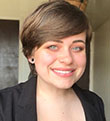 Makayla Ley – I am a senior pursuing a dual degree in Mechanical and Aerospace Engineering at New Mexico State University. I am the Vice President of the Society of Women Engineers Chapter where I help organize outreach programs that incorporate hands-on engineering projects. I strive to educate and inspire the younger generation. My current research focus is investigation of structural dynamic nonlinearities arising from three primary sources: (1) contact and impact effects, (2) large elastic deformation and/or large displacement, and (3) material uncertainties. Previous research involved exploration of the extensive applications of energy harvesters. I hope to investigate renewable energy systems further throughout my graduate studies. Outside school, I love woodworking, painting, skiing, hiking, playing tennis, cooking, and, of course, eating. Fun facts about me are I raced in mud bogs, and I am learning how to build engines.
Makayla Ley – I am a senior pursuing a dual degree in Mechanical and Aerospace Engineering at New Mexico State University. I am the Vice President of the Society of Women Engineers Chapter where I help organize outreach programs that incorporate hands-on engineering projects. I strive to educate and inspire the younger generation. My current research focus is investigation of structural dynamic nonlinearities arising from three primary sources: (1) contact and impact effects, (2) large elastic deformation and/or large displacement, and (3) material uncertainties. Previous research involved exploration of the extensive applications of energy harvesters. I hope to investigate renewable energy systems further throughout my graduate studies. Outside school, I love woodworking, painting, skiing, hiking, playing tennis, cooking, and, of course, eating. Fun facts about me are I raced in mud bogs, and I am learning how to build engines.
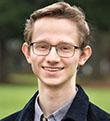 Peter Newman – I am a senior studying mechanical engineering at Washington State University of Vancouver, as well as the payload team lead for the WSUV Aerospace Club. My goal as an engineer is to contribute as much as possible to the frontiers of technology, while also minimizing the damage done to our surrounding environments. My academic interests are related to design and fluid mechanics as applications of aerospace and energy production methods that do not produce greenhouse gases (nuclear & renewables). Outside of my studies, I enjoy running and playing pick-up Ultimate Frisbee.
Peter Newman – I am a senior studying mechanical engineering at Washington State University of Vancouver, as well as the payload team lead for the WSUV Aerospace Club. My goal as an engineer is to contribute as much as possible to the frontiers of technology, while also minimizing the damage done to our surrounding environments. My academic interests are related to design and fluid mechanics as applications of aerospace and energy production methods that do not produce greenhouse gases (nuclear & renewables). Outside of my studies, I enjoy running and playing pick-up Ultimate Frisbee.
Project Description
Mentors: Jeff Tippmann, Christian Ward, Brian West
Students: Erik Barbosa, Sean Detwiler, Kristen Steudel
Structural health monitoring (SHM) commonly involves recording vast amounts of data from multiple sensors. Depending on the specific application these systems can require prohibitively large bandwidth for resolving damage-indicative features. The primary challenges are often attributed to memory limitations, energy requirements, cost, weight, and size. Previous research in the Engineering Institute has focused on compressive sensing to reduce the size of data transferred while maintaining signal reconstruction capabilities for high-fidelity signal analysis. Furthermore, there has been recent work in understanding event-based monitoring, which collects data non-uniformly based on triggers. Both modalities have aimed to understand how to improve sampling for multi-sensor systems, but are restricted to lower sampling rates or are prone to missed events. This project will focus on determining optimal triggering schemes of finite length recorded signals in order to expand the bandwidth beyond Nyquist, assuming the signal of interest is omnipresent across all recordings. Here we will explore the deliberate spacing of triggered uniform sampling rate data collection from single and multiple channels over different modalities (e.g. acoustic, vibration, and/or current). The students will demonstrate the developed approach through an experiment designed by the students and executed by the mentors in the lab.
Project Team
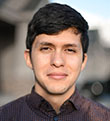 Erik Barbosa – I am a Senior Mechanical Engineer at Brigham Young University where I conduct research in the Temperature, Energy and Material Properties (TEMP) Lab. Currently, my research involves developing a sensor using the transient hot wire method to measure the thermal conductivity of molten salts for nuclear applications. I also serve as a generator engineer on the DOE Collegiate Wind Competition team. My areas of interest and future research aspirations are materials for extreme environments, sensing technologies and improving energy conservation. Another passion of mine is community engagement as I have held leadership roles in the Society of Hispanic Professional Engineers and World Energy Forum chapters at BYU. I will be pursuing research parallel to my interests as a newly admitted PhD student. Outside of the classroom, I enjoy spending time with my wife doing outdoor activities such as hiking, biking and rock climbing.
Erik Barbosa – I am a Senior Mechanical Engineer at Brigham Young University where I conduct research in the Temperature, Energy and Material Properties (TEMP) Lab. Currently, my research involves developing a sensor using the transient hot wire method to measure the thermal conductivity of molten salts for nuclear applications. I also serve as a generator engineer on the DOE Collegiate Wind Competition team. My areas of interest and future research aspirations are materials for extreme environments, sensing technologies and improving energy conservation. Another passion of mine is community engagement as I have held leadership roles in the Society of Hispanic Professional Engineers and World Energy Forum chapters at BYU. I will be pursuing research parallel to my interests as a newly admitted PhD student. Outside of the classroom, I enjoy spending time with my wife doing outdoor activities such as hiking, biking and rock climbing.
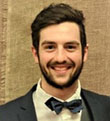 Sean Detwiler – I am a first year PhD student studying Mechanical Engineering at the University of Utah. Currently, I conduct research in the Nano-tribology and Precision Engineering Laboratory, focusing on the surface roughness of laser powder bed Ffsion 3D printed parts. For my undergraduate education I attended the University of Maine for Mechanical Engineering. During my undergrad, I was a member of the Biomedical and Robotics Laboratory and worked on the design and construction of a humanoid robotic arm for testing of wearable robotics. Outside of the classroom, I enjoy hiking, mountain biking, white-water canoeing, and camping.
Sean Detwiler – I am a first year PhD student studying Mechanical Engineering at the University of Utah. Currently, I conduct research in the Nano-tribology and Precision Engineering Laboratory, focusing on the surface roughness of laser powder bed Ffsion 3D printed parts. For my undergraduate education I attended the University of Maine for Mechanical Engineering. During my undergrad, I was a member of the Biomedical and Robotics Laboratory and worked on the design and construction of a humanoid robotic arm for testing of wearable robotics. Outside of the classroom, I enjoy hiking, mountain biking, white-water canoeing, and camping.
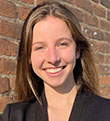 Kristen Steudel – I am a junior studying Mechanical Engineering and Mathematics/Economics at Lafayette College, where I am a member of Tau Beta Pi, Pi Mu Epsilon, Marquis Scholars, Running Club, Women’s Club Volleyball, Society of Women Engineers, and I serve as Vice President of American Society of Mechanical Engineers. I enjoy volunteering in the community and worked on a team to create an asset map of the West Ward of Easton, PA as well as began a reading program for children whose parents were English Language learners in my hometown in Massachusetts. I have conducted math research on static and dynamic strategies in the game ‘Pass the Pigs’ and am currently researching groundwater irrigation in Ethiopia. In my free time I enjoy cooking, hiking, reading, and playing sports.
Kristen Steudel – I am a junior studying Mechanical Engineering and Mathematics/Economics at Lafayette College, where I am a member of Tau Beta Pi, Pi Mu Epsilon, Marquis Scholars, Running Club, Women’s Club Volleyball, Society of Women Engineers, and I serve as Vice President of American Society of Mechanical Engineers. I enjoy volunteering in the community and worked on a team to create an asset map of the West Ward of Easton, PA as well as began a reading program for children whose parents were English Language learners in my hometown in Massachusetts. I have conducted math research on static and dynamic strategies in the game ‘Pass the Pigs’ and am currently researching groundwater irrigation in Ethiopia. In my free time I enjoy cooking, hiking, reading, and playing sports.
Project Description
Mentors: David Mascareñas, Alessandro Cattaneo, Fernando Moreu
Students: Celeste DeVilliers, Jack Sorensen, Kevin Zheng
Project Team
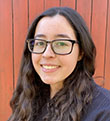 Celeste DeVilliers – I am currently a senior majoring in Civil Engineering with a minor in mathematics at Texas Tech University. I am a member of the Texas Tech Honors College, Chi Epsilon, the Lubbock Public Health Initiative, and the Society of Women Engineers. In the past, I have designed and constructed a prototype solar panel, as well as making a project completion presentation to NASA personnel as a part of NASA’s HAS program. During the summer of 2020, I competed a community service project with the South Plains Food Bank where I assisted the food-insecure in the Lubbock community during the COVID-19 crisis. After graduating, I intend to pursue a master’s degree in Civil Engineering and an MBA. In my free time I enjoy painting, cycling, playing violin, and reading.
Celeste DeVilliers – I am currently a senior majoring in Civil Engineering with a minor in mathematics at Texas Tech University. I am a member of the Texas Tech Honors College, Chi Epsilon, the Lubbock Public Health Initiative, and the Society of Women Engineers. In the past, I have designed and constructed a prototype solar panel, as well as making a project completion presentation to NASA personnel as a part of NASA’s HAS program. During the summer of 2020, I competed a community service project with the South Plains Food Bank where I assisted the food-insecure in the Lubbock community during the COVID-19 crisis. After graduating, I intend to pursue a master’s degree in Civil Engineering and an MBA. In my free time I enjoy painting, cycling, playing violin, and reading.
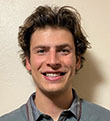 Jack Sorensen – I am a junior pursuing a Bachelor’s Degree in Mechanical Engineering at Colorado State University. After undergraduate school, I would like to attend graduate school and continue my education in a specialized engineering field. I am most interested in the aerospace and machine design fields. When I am not studying, I like to spend my time outside. Most of my free time is spent hiking, backpacking, snowboarding, rock hounding, or taking care of my garden.
Jack Sorensen – I am a junior pursuing a Bachelor’s Degree in Mechanical Engineering at Colorado State University. After undergraduate school, I would like to attend graduate school and continue my education in a specialized engineering field. I am most interested in the aerospace and machine design fields. When I am not studying, I like to spend my time outside. Most of my free time is spent hiking, backpacking, snowboarding, rock hounding, or taking care of my garden.
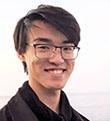 Kevin Zheng – I’m a senior with a double major in Computer Science & Engineering and Physics at the University of California, Merced. There, I’m an undergraduate research assistant at The MESA Lab where I simulate and benchmark drone swarm control algorithms, as well as research applications of fractional dynamics, the study of dynamical systems which behave according to non-integer order integral and derivative operators. For my physics senior thesis, I’m researching quantum field theory from the perspective of fractional dynamics. I hope to attend graduate school and research computational physics.
Kevin Zheng – I’m a senior with a double major in Computer Science & Engineering and Physics at the University of California, Merced. There, I’m an undergraduate research assistant at The MESA Lab where I simulate and benchmark drone swarm control algorithms, as well as research applications of fractional dynamics, the study of dynamical systems which behave according to non-integer order integral and derivative operators. For my physics senior thesis, I’m researching quantum field theory from the perspective of fractional dynamics. I hope to attend graduate school and research computational physics.
Project Description
Mentors: Adam Wachtor, Erica Jacobson, Nikolaos Dervilis
Students: Justin Dalton, Nicholas, Dzomba, Cole Maxwell
Full-field nondestructive evaluation (NDE) technologies provide a holistic assessment of the damage state of a part or assembly. Since damage can occur anywhere from the factory floor (improper layup in a wind turbine blade) to its service environment (material thinning caused by corrosive material storage or transport), such NDE is needed to certify a part or assembly associated with high-risk applications both before and after it is placed into service to ensure its current state meets the specifications it was designed to. Most of these techniques rely on repetitious transient measurements at a moving point to build up the full-field assessment – equating to long and costly measurement times which motivates many industries to abandon full-field NDE and rely on point inspections at discrete locations instead.
Acoustic steady-state excitation spatial spectroscopy (ASSESS) is a LANL-developed, rapid NDE technology that is positioned to address this issue for a wide variety of industries and LANL applications. ASSESS uses steady-state ultrasonic excitation and noncontact laser Doppler vibrometer (LDV) measurements of the surface response to identify damage orders of magnitude faster than traditional time-of-flight ultrasonic measurements. ASSESS measurement speeds, 5-10 m2/min, enable full wavefield images to be collected over large parts and assemblies.
A convolutional neural network (CNN) is a deep learning algorithm which can take in input data e.g. an image most famously, allocate importance to various aspects/objects in the image and then be able to differentiate/classify one from the other. CNN processing of the wavefield images generated from ASSESS measurements has several advantages over other processing methods for identifying and characterizing defects, including processing speed and defect predictions nearpart boundaries.
Project Team
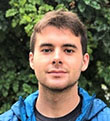 Justin Dalton – I am a third-year undergraduate student studying Structural Engineering with a focus in aerospace structures at the University of California, San Diego. I am involved with the student ASCE chapter and I am currently a laboratory research assistant working with a laser ultrasonic imaging system that is used to detect structural damage. I plan on attending graduate school to receive a masters in structural engineering and gain more knowledge of aerospace structures and structural health monitoring. Some of my hobbies outside of class include hiking, rock climbing, and surfing.
Justin Dalton – I am a third-year undergraduate student studying Structural Engineering with a focus in aerospace structures at the University of California, San Diego. I am involved with the student ASCE chapter and I am currently a laboratory research assistant working with a laser ultrasonic imaging system that is used to detect structural damage. I plan on attending graduate school to receive a masters in structural engineering and gain more knowledge of aerospace structures and structural health monitoring. Some of my hobbies outside of class include hiking, rock climbing, and surfing.
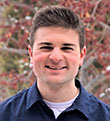 Nicholas Dzomba – I am a third year student majoring in Computer Science and Mathematics at Montana State University. Previously I have worked with the Montana Space Grant Consortium BOREALIS program on organizing and designing systems for high altitude balloon flights, including developing live landing prediction software. I am also a teaching assistant and tutor for the Computer Science department. In my free time I enjoy hiking, traveling, playing video games and watching baseball.
Nicholas Dzomba – I am a third year student majoring in Computer Science and Mathematics at Montana State University. Previously I have worked with the Montana Space Grant Consortium BOREALIS program on organizing and designing systems for high altitude balloon flights, including developing live landing prediction software. I am also a teaching assistant and tutor for the Computer Science department. In my free time I enjoy hiking, traveling, playing video games and watching baseball.
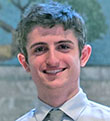 Cole Maxwell – I am a junior studying Mechanical Engineering and Computer Science at Stanford University, where I am also a member of Tau Beta Pi and serve as president of Engineers for a Sustainable World. My past research involves non-destructive prediction of water activity in applications involving food safety. I hope to attend graduate school in the future to study robotic motion planning, sensing, and control. Outside of the classroom and lab, I enjoy reading, building robots, and spending time outdoors.
Cole Maxwell – I am a junior studying Mechanical Engineering and Computer Science at Stanford University, where I am also a member of Tau Beta Pi and serve as president of Engineers for a Sustainable World. My past research involves non-destructive prediction of water activity in applications involving food safety. I hope to attend graduate school in the future to study robotic motion planning, sensing, and control. Outside of the classroom and lab, I enjoy reading, building robots, and spending time outdoors.
Project Description
Mentors: Alex Scheinker, Alan Williams
Students: Will Compton, Mason Curtin, Wilson Vogt
Deep reinforcement learning (RL) is an active area of machine learning in which optimal control methods are applied to analytically unknown systems by modeling the system dynamics or optimal control policies using deep neural networks. Deep RL methods have shown extremely impressive results for systems with fixed rules, such as chess. Our system of focus will be a 4-story structure attached to a shake table as well as several smaller active controllers. The goal is to develop deep RL-based active feedback control tools, to apply forces dynamically to the floors in the structure, which can mitigate disturbances like earthquakes simulated by the shake table on the ground floor.
Project Team
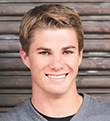 Will Compton – I am a junior majoring in Mechanical Engineering and minoring in Robotics at the Georgia Institute of Technology, where I am a research assistant at EPIC Labs, a tutor, a Prototyping Instructor at the mechanical engineering makerspace, and a member of the club basketball team. My current research investigates the use of machine learning in the high-level control of a knee-ankle prosthesis. Outside of class, I enjoy playing pickup sports and building things.
Will Compton – I am a junior majoring in Mechanical Engineering and minoring in Robotics at the Georgia Institute of Technology, where I am a research assistant at EPIC Labs, a tutor, a Prototyping Instructor at the mechanical engineering makerspace, and a member of the club basketball team. My current research investigates the use of machine learning in the high-level control of a knee-ankle prosthesis. Outside of class, I enjoy playing pickup sports and building things.
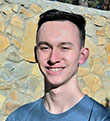 Mason Curtin – I am a senior studying Mechanical & Aerospace Engineering at New Mexico State University, where I am also a member on the manufacturing subteam of the Atomic Aggies, which is NMSU’s Intercollegiate Rocket Engineering Competition team. I am currently researching two topics relating to the environmental testing of structures: (1) dynamical responses of additively manufactured systems and (2) influence of contact/impact boundaries on beam-based systems. Mason is considering pursuing graduate school after obtaining his undergraduate dual major. Aside from education, I enjoy working out, hiking, longboarding, and playing games with friends.
Mason Curtin – I am a senior studying Mechanical & Aerospace Engineering at New Mexico State University, where I am also a member on the manufacturing subteam of the Atomic Aggies, which is NMSU’s Intercollegiate Rocket Engineering Competition team. I am currently researching two topics relating to the environmental testing of structures: (1) dynamical responses of additively manufactured systems and (2) influence of contact/impact boundaries on beam-based systems. Mason is considering pursuing graduate school after obtaining his undergraduate dual major. Aside from education, I enjoy working out, hiking, longboarding, and playing games with friends.
 Wilson Vogt – I am a recent graduate of Montana State University, where I majored in Mechanical Engineering and minored in Aerospace. In addition to my studies, I worked as a Physics Tutor, Physics Peer Mentor, and Engineering Peer Academic Leader (ePAL). I also participated in two internships with the Montana Space Grant Consortium where I worked on various multidisciplinary projects in the field of high-altitude ballooning, including the construction of zero pressure balloons and development of payload structures. When I am not working, I love to hike, camp, and travel.
Wilson Vogt – I am a recent graduate of Montana State University, where I majored in Mechanical Engineering and minored in Aerospace. In addition to my studies, I worked as a Physics Tutor, Physics Peer Mentor, and Engineering Peer Academic Leader (ePAL). I also participated in two internships with the Montana Space Grant Consortium where I worked on various multidisciplinary projects in the field of high-altitude ballooning, including the construction of zero pressure balloons and development of payload structures. When I am not working, I love to hike, camp, and travel.
Project Description
Mentors: David Mascareñas, Andrew Sornberg
Students: Jabari Allen, Raymond Chu, Troy Sims
Project Team
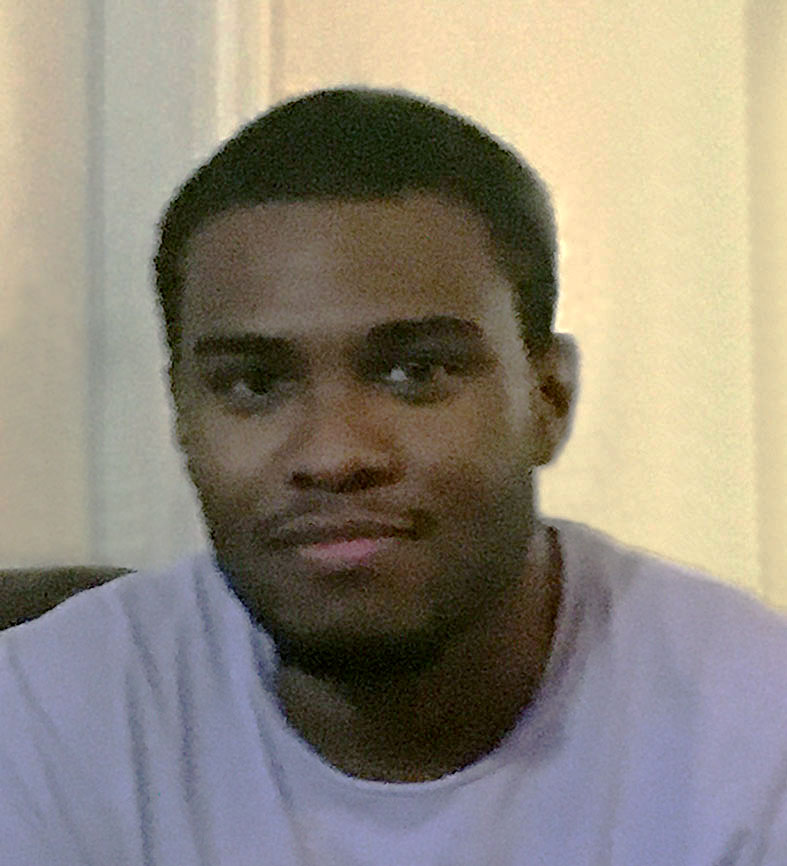 Jabari Allen – I am a senior studying Computer Engineering at Florida A&M University, where I also am a member of Tau Beta Pi. Currently, my research involves the estimation of structural vibration modal properties using a spike-based computing paradigm.
Jabari Allen – I am a senior studying Computer Engineering at Florida A&M University, where I also am a member of Tau Beta Pi. Currently, my research involves the estimation of structural vibration modal properties using a spike-based computing paradigm.
 Raymond Chu – My name is Raymond Chu and I am from Oakland, CA. I am currently a rising fourth year undergraduate student studying Structural Engineering with a focus in Civil Structures at the University of California, San Diego. As an officer within the Society of Civil and Structural Engineers (SCSE) at UC San Diego, I am also Project Manager for the Steel Bridge Project Team and Conference Chair of the American Society of Civil Engineers (ASCE) Pacific Southwest Student Conference 2022. My work for Professor Machel Morrison’s research involves investigating the effects on mechanical properties of steel after various heat treatment combinations. I will be applying for Master’s programs in Structural Engineering in the Spring and Fall 2021 academic quarters. Outside of the classroom and extracurricular life, I enjoy lifting weights, experimenting with new cooking recipes, and spending time outdoors.
Raymond Chu – My name is Raymond Chu and I am from Oakland, CA. I am currently a rising fourth year undergraduate student studying Structural Engineering with a focus in Civil Structures at the University of California, San Diego. As an officer within the Society of Civil and Structural Engineers (SCSE) at UC San Diego, I am also Project Manager for the Steel Bridge Project Team and Conference Chair of the American Society of Civil Engineers (ASCE) Pacific Southwest Student Conference 2022. My work for Professor Machel Morrison’s research involves investigating the effects on mechanical properties of steel after various heat treatment combinations. I will be applying for Master’s programs in Structural Engineering in the Spring and Fall 2021 academic quarters. Outside of the classroom and extracurricular life, I enjoy lifting weights, experimenting with new cooking recipes, and spending time outdoors.
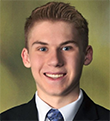 Troy Sims – I am currently a senior-level undergraduate honors student at the New Mexico Institute for Mining and Technology (New Mexico Tech). On-campus, I serve as the president of the local student chapter of IEEE, a member of the NM Tech powerlifting team, and as an undergraduate research assistant. My research on campus involves short field communication and power transfer through metal barriers, the manufacturing of an optimal transport Mars rover design, the design of an agricultural drone, and the application of a digital twin for structural health monitoring with the use of AI to track and classify cracks in concrete bridges.
Troy Sims – I am currently a senior-level undergraduate honors student at the New Mexico Institute for Mining and Technology (New Mexico Tech). On-campus, I serve as the president of the local student chapter of IEEE, a member of the NM Tech powerlifting team, and as an undergraduate research assistant. My research on campus involves short field communication and power transfer through metal barriers, the manufacturing of an optimal transport Mars rover design, the design of an agricultural drone, and the application of a digital twin for structural health monitoring with the use of AI to track and classify cracks in concrete bridges.
I come from a large family of 7 siblings. In my leisure time, I enjoy making salsa, hiking, working on cars, off-roading, and reading self-improvement books. My projected graduation date with my BSEE is in May 2022. I have a desire to pursue graduate-level education with a possible emphasis on neural engineering.
Project Description
Mentors: Nick Lieven, Phil Cornwell
Students: Alex Binder, Conner, Ozatalar, Kendyl Wright
Project Team
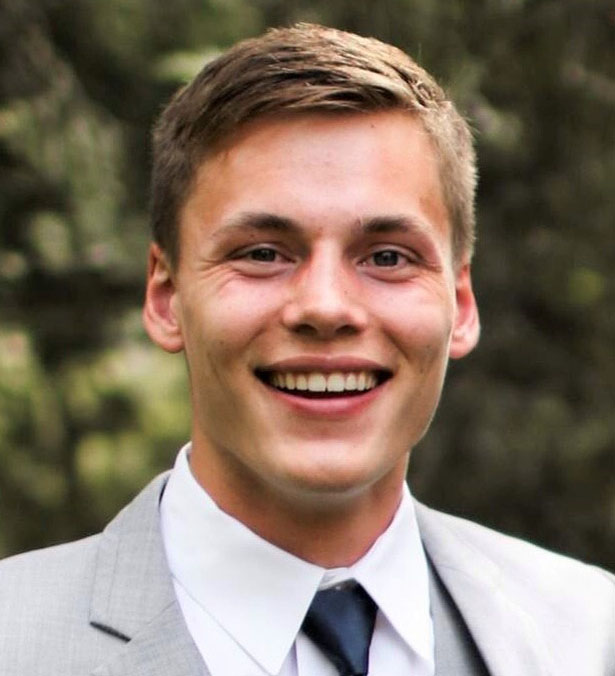 Alex Binder – I am a senior at New Mexico State University, completing a double major in both Aerospace and Mechanical Engineering; it is my goal to pursue my master’s degree in Aerospace Engineering. Upon graduation, I plan to go into the aerospace industry to further expand space travel capabilities. I am a member of Tau Beta Pi, and the Recovery Team lead on the Atomic Aggies rocket engineering team, a group that competes in the Spaceport America Cup every year. I am currently researching uncertainty quantification and analysis- through this research, I am studying the linear and nonlinear effects of boundary conditions on system output responses. Apart from academics, I enjoy building rockets, lifting, and am an avid Formula 1 fan.
Alex Binder – I am a senior at New Mexico State University, completing a double major in both Aerospace and Mechanical Engineering; it is my goal to pursue my master’s degree in Aerospace Engineering. Upon graduation, I plan to go into the aerospace industry to further expand space travel capabilities. I am a member of Tau Beta Pi, and the Recovery Team lead on the Atomic Aggies rocket engineering team, a group that competes in the Spaceport America Cup every year. I am currently researching uncertainty quantification and analysis- through this research, I am studying the linear and nonlinear effects of boundary conditions on system output responses. Apart from academics, I enjoy building rockets, lifting, and am an avid Formula 1 fan.
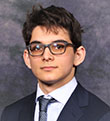 Conner Ozatalar – My name is Conner Ozatalar. I am a rising senior at Rose-Hulman institute of Technology where I am studying to get my bachelor’s degree in mechanical and electrical engineering. I really enjoy my classes related to energy production and distribution, and after I graduate, I would like to use my education to help make the world a more sustainable place. In addition to my schoolwork, I enjoy learning to play new musical instruments including the saxophone, flute, clarinet, and bassoon. I lead the Rose-Hulman saxophone ensemble in addition to playing in the school band, orchestra, pep band, and pit orchestra.
Conner Ozatalar – My name is Conner Ozatalar. I am a rising senior at Rose-Hulman institute of Technology where I am studying to get my bachelor’s degree in mechanical and electrical engineering. I really enjoy my classes related to energy production and distribution, and after I graduate, I would like to use my education to help make the world a more sustainable place. In addition to my schoolwork, I enjoy learning to play new musical instruments including the saxophone, flute, clarinet, and bassoon. I lead the Rose-Hulman saxophone ensemble in addition to playing in the school band, orchestra, pep band, and pit orchestra.
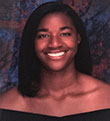 Kendyl Wright – I am a Junior Mechanical Engineering Student attending North Carolina Agricultural and Technical State University. During my 2020 spring semester, I worked at the NSF Engineering Research Center for Revolutionizing Metallic Biomaterials. As a student researcher I collaborated with my team to get the lab's micro injection molding machine operational, so that researchers could design microfluidic devices for bioengineering type testing. I was responsible for designing an exterior mold for the machine using the software solid works and researching different types of polymers that could potentially be injected into the interior mold. I was also the team leader for my sophomore project and Aggie Freshman Innovation Challenge Competition; where me and my team placed as finalists. More recently, I have had experience working virtually as an Undergraduate student in the Materials Synthesis and Integrated Devices Group at LANL. I completed virtual training for Additive Manufacturing as well as Rheology and Dynamic Mechanical Analysis. Currently, I am researching my University's Xray CT Facility. In my free time, I enjoy volunteering with FIRST Lego League and participating in their Tech Challenges for kids as a robotic design judge. As a judge, I speak to the youth encouraging them to pursue degrees in STEM.
Kendyl Wright – I am a Junior Mechanical Engineering Student attending North Carolina Agricultural and Technical State University. During my 2020 spring semester, I worked at the NSF Engineering Research Center for Revolutionizing Metallic Biomaterials. As a student researcher I collaborated with my team to get the lab's micro injection molding machine operational, so that researchers could design microfluidic devices for bioengineering type testing. I was responsible for designing an exterior mold for the machine using the software solid works and researching different types of polymers that could potentially be injected into the interior mold. I was also the team leader for my sophomore project and Aggie Freshman Innovation Challenge Competition; where me and my team placed as finalists. More recently, I have had experience working virtually as an Undergraduate student in the Materials Synthesis and Integrated Devices Group at LANL. I completed virtual training for Additive Manufacturing as well as Rheology and Dynamic Mechanical Analysis. Currently, I am researching my University's Xray CT Facility. In my free time, I enjoy volunteering with FIRST Lego League and participating in their Tech Challenges for kids as a robotic design judge. As a judge, I speak to the youth encouraging them to pursue degrees in STEM.
Selected Guest Lectures
Phil Cornwell
Professor of Mechanical Engineering
US Air Force Academy
In this talk, Dr. Cornwell will discuss how to give effective oral presentations using a type of slide design called the assertion-evidence approach. In this approach, the presenter is required to explicitly identify what messages (assertions) he or she is trying to make and the evidence to support these assertions. The information in this talk is based on the work of Dr. Michael Alley from Penn State.
Curtt Ammerman
LANL, Q-15
Los Alamos National Laboratory is the nuclear design agency responsible for the B61-12 Life Extension Program (LEP). The term “life extension program” means a program to repair/replace components of a nuclear weapon to ensure its ability to meet military requirements. By extending the life, or time that a weapon can safely and reliably remain in the stockpile without having to be replaced or removed, the National Nuclear Security Administration (NNSA) is able to maintain a credible nuclear deterrent without producing new weapons or conducting new underground nuclear tests. This LEP will consolidate multiple B61 mods, replace aging components, and extend the lifetime of the B61 for an additional 20 to 30 years. The LEP will complete a first production unit no later than the end of FY2020. This presentation will provide a brief overview of the B61LEP, and will dive more deeply into the testing and qualification activities that are being conducted to ensure that the B61-12 meets its requirements to be safe and reliable.
Nikolaos Dervilis
Dynamics Research Group, Department of Mechanical Engineering
University of Sheffield
The use of offshore wind farms has been growing in recent years, especially in Europe. United Kingdom is presenting a geometrically-growing interest in exploring and investing in such offshore power plants as the country's water sites offer impressive wind conditions. The new generation of offshore wind turbines shall have blades that will exceed 100m and soon will reach 150m in size (15MW wind turbine PM generators). This talk will give an overview of offshore wind turbines and farms.
The cost of an offshore wind farm is relatively high, and therefore their reliability is crucial if they ever need to be fully integrated into the energy arena.
In turn, this talk will present an overview of current monitoring trends for wind turbines (WTs) and will try to address the motivation and the effectiveness of Structural Health Monitoring (SHM) and machine learning applications for WTs, as well as, the idea of intelligent
WT.
Beth Boardman
LANL, E-3
This presentation will introduce robot motion planning concepts, including discrete and continuous motion planning algorithms. Briefly, topics in dynamic motion planning will be covered. The presentation will conclude with some examples of robotic projects at LANL.
Cynthia Reichhardt
LANL, T-1
I give an introduction to the topic of ratcheting motion, a fundamentally nonequilibrium phenomenon. In a ratchet effect, a net dc transport of particles, dislocations, or other objects is produced by purely ac driving in the presence or absence of thermal fluctuations. I describe the crucial role that symmetry breaking plays in producing ratcheting motion, and show examples drawn from fields as diverse as swimming bacteria and superconducting magnets, and including the thermal ratcheting of dislocations in materials. For collectively interacting systems, the direction of dc motion can show multiple reversals.
Nick Lieven
University of Bristol
Prof Lieven’s talk will explore the extreme dynamic behavior of aircraft and their related systems. A particular focus will be on the physical factors which lead to flutter and aircraft instability. Although flutter can be an entirely predictable phenomenon there is an increasing awareness that such aeroelastic instabilities can be caused by structural non-linearities and human intervention. The talk will explain how these factors can interact in a potentially destructive way and what technologies and design modifications can be deployed to mitigate against this behavior. The talk will consider both the modelling aspects of aircraft non-linearities and the practical considerations associated with flight testing and – ultimately – flight safety.
Pete Avitabile
University of Massachusetts Lowell
The objective of the experimental modal overview following the dynamic systems lecture is to demonstrate through a live impact modal test to identify a few important theory items, discuss impact test considerations, acquire a set of FRFs and obtain modal parameters. Discussion of the process as outlined above to conclude the experimentation/demonstration.



